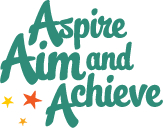Post-Primary
Symbols of the Olympic and Paralympic Games
Pupils will:
- be aware of the symbols of the Olympic and Paralympic Games;
- understand how the symbols connect with the values of the Olympic and Paralympic Games;
- create an effective poster, presentation or film about the symbols of the Olympic and Paralympic Games.
Statutory Requirements:
Local and Global Citizenship
Diversity and Inclusion
Pupils should have opportunities to investigate how individuals and groups express their identity.
Art and Design
Pupils should have opportunities to develop their own personal and creative responses by:
- using the visual elements with understanding when engaging in art and design; and
- evaluating and appreciating their own and others work through discussion and reflection.
Pupils should have opportunities to investigate and respond to the use of visual language, logos and catchphrases in advertising.
Cross-Curricular Skills:
Using ICT
Pupils should be enabled to:
- access, select, interpret and research information from a range of digital sources;
- use a range of contemporary digital methods to communicate, exchange and share their work; and
- showcase their learning across the curriculum.
Communication
Pupils should be enabled to:
- listen to and take part in discussions, explanations, role-plays and presentations;
- find, select and use information from a range of sources; and
- communicate information, ideas, opinions, feelings and imaginings, using an expanding vocabulary.
Thinking Skills and Personal Capabilities:
Being Creative
Pupils will make ideas real by experimenting with different designs, actions and outcomes.
Managing Information
Pupils will use a range of methods for collating, recording and representing information.
In this activity pupils look at the symbols of the Olympic and Paralympic Games and relate these to the values they discussed in the previous activity. Pupils then analyse what makes an effective logo or symbol and create a ‘brand’ for a school Olympic and Paralympic Celebration Event.
Activity
Symbols of the Games
Recap on the values learned in the previous lesson. Explain to your pupils that in this lesson they will research the symbols of the Olympic and Paralympic Games. These symbols also represent the values of the Games.
Divide the class into groups of four and give each group one of the following categories:
- The Olympic and Paralympic Flame;
- The Olympic Rings and Paralympic Symbol;
- The Olympic and Paralympic Flags;
- The Olympic and Paralympic Mottoes;
- The Olympic Creed and Paralympic Vision;
- The Olympic Flame and Torch; and
- The Olympic Mascots.
Each group must find out the answers to the following questions for their particular category:
- What is it? Describe or draw what it looks or sounds like.
- When and where do you see/hear it?
- What does it represent?
- How does it represent the values of the Olympic and Paralympic Games?
You can find useful websites in the ‘You will need’ section.
In their groups, ask your pupils to discuss their findings, agree their answers, and nominate a spokesperson to feed back to the rest of the class. Record their findings on the board.
The groups use the findings from the research activity to create a poster, presentation or film clip to show to other pupils in the school to inform them about the Olympics. Each group must work on their subject, agreeing how to present the information to other pupils. If the class is creating a presentation, each group will create two or three slides to fit into the presentation. If the class is creating a film clip, it should be no longer than two minutes. These files can be combined into one film later.
Creating a Brand
There is a useful timeline of Olympic brands over the years on the www.olympic.org website as a starting point for a discussion of how brands have changed and developed over the years. As the pupils to vote on which image is most memorable and successful.
There are several useful pages on the official www.Rio2016.com website showing the branding for the 2016 Olympics and Paralympics as well as the logos for the various sports. Show these to the class and discuss how design, colour and fonts have been used.
Ask the pupils that they must create their own logo for a school celebration of the Olympic and Paralympic Games. This logo will form part of the branding of the school’s celebration. Use the Worksheet Create Your Own Brand to help your pupils understand how branding works and help them to consider how to design an effective logo. Ask your pupils to show their finished logos to the rest of the class and explain their reasons for choosing that design. Use the Dot Voting method to decide which logo to use in the school celebration.
Additional Activities
Mascots
There are attractive pages on the www.Rio2016.com website introducing the Olympic mascots, explaining the thinking behind their creation and illustrated with cute cartoon clips. These could be used as inspiration of your pupils to design mascots for the school’s Olympic and Paralympic event.
Merchandising
The pupils might enjoy coming up with ideas for merchandise that could be produced for the school’s Olympic and Paralympic Event, for example a T-shirt, a mug, a new school badge or a mouse mat. Ask them to investigate the cost of producing the merchandise and conduct research into how much pupils would be willing to pay for it.
You will need
An interactive whiteboard
Access to the internet
100 Years of Olympic Marketingwww.olympic.org
Lookwww.rio2016.com
Mascotswww.rio2016.com

